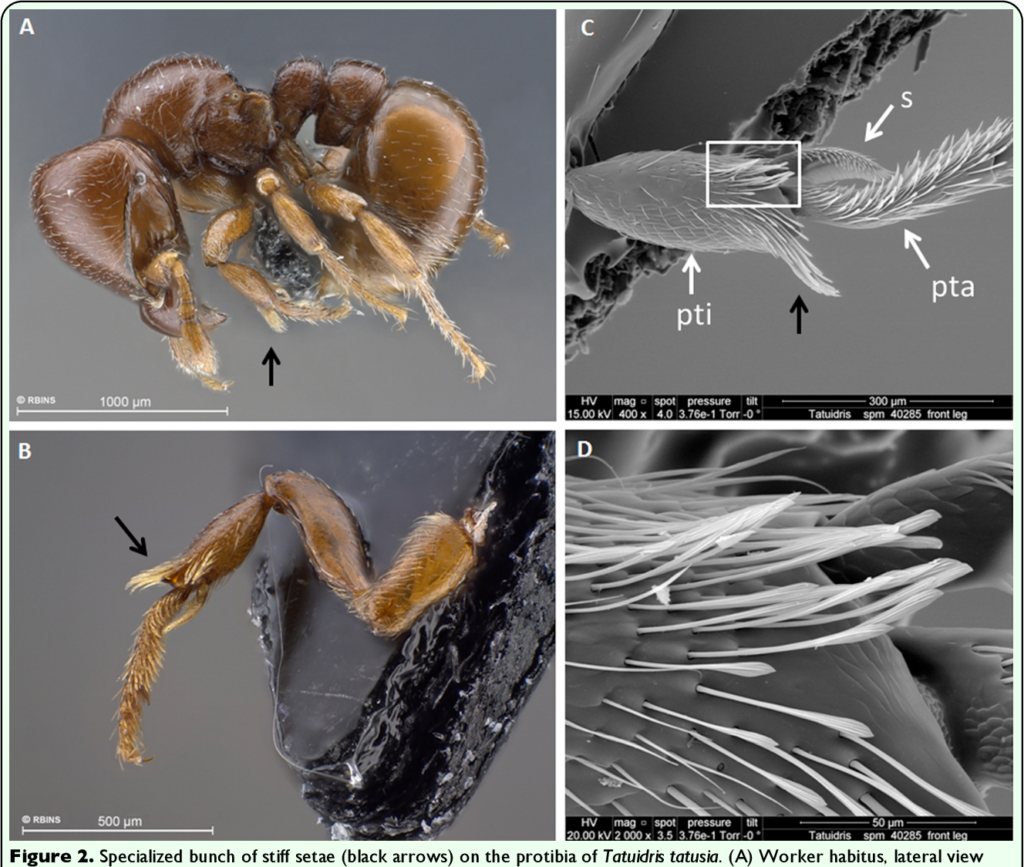Ant Taxonomy SubFamily- Agroecomyrmecinae
About SubFamily Agroecomyrmecinae
There are two genera in this well-known subfamily. In both cases, they are monotypic. This means that despite the fact that there are some collected remains, the truth is that it is still a very little-known species. Among this subfamily, we can find
- Ankylomyrma
- Tatuidris tatusia
- Tatuidris
- Finally we will find Ankylomyrma coronacantha
In the case of Tatuidris, it was found for the first time in the Neotropics, which generally covers the areas of northern Mexico to central Brazil, as well as Amazonian Peru and even part of French Guiana. Currently, it is known that most of the samples collected have appeared in areas near the South American Andes and finally part of Central America and Mexico. In addition to this, several remains of garbage left by this species as well as the rest of the vegetation, have also been used as references.
Scientific Classification Table on Agroecomyrmecinae
Kingdom: Belongs to the Animalia kingdom
Edge: It was classified in the category of arthropods
Class: It is an insect class
Order: His Order is Hymenoptera
Family: Being an ant, it is part of the Formicidae family.
Subfamily: Agroecomyrmecinae
Diversity: Currently, two genera, as well as two species, have been discovered.
Fossils: 3 fossil species
Microscope photos of Agroecomyrmecinae

Microscope photos of Agroecomyrmecinae
Identification
Among its most outstanding features are large jaws. These are so large that even the chewing margins do not allow the mouth to close completely, but despite this, they do not overlap. The ocular cavities are located at the posterior end of the deep antennal scrobo area. Many scientists were surprised to note a very broadly triangular and even well-inserted clypeus between the frontal lobes.
In the case of the antennal basins, these, over time, ended up migrating to the lateral sides (Section also known as Frontal Lobes) until finally being located in a position somewhat separated from the lateral margins of its head.
The metatibia with a pectinate spur and, of course, the mesotibia with a similar spur.
The Alitronco is known for being compact and quite short. The segment of the abdomen is large and with a wide margin of articulation, and highly vaulted.
FUNNY FACT
Later we will enter a tribe called Dacetine of the Lenomyrmex genus. This one has a mandibular segment that is not superimposed in the complete closure, in the same way, that it happens with the Agroecomyrmecinae. It is an interesting characteristic that they have in common. Obviously, these are convergences, but it is still curious since both subfamilies are morphologically different and lack tribal similarities.
And since we are talking about biological similarities, in the case of the antennal sockets with close proximity to the lateral margin. The Dacetine tribes and also the Cataulacini tribe possess similar similarities. Both are acquired by a parallel evolutionary process.
Morphology
Worker Ant
There are no major differences between these and female ants. The biggest difference is in their size, where the worker ant has a tendency to be smaller.
Queen ant
Here if we manage to find more marked differences, for example, the subframe located in the head; as well as much smaller jaws; more pronounced clyping; the presence of antennal brooms; a much shorter length in the antennae (To be more specific, 12 segments), postpetiole and petiole compressed and even shorter and finally two ulnar cells per forewing.
Other differential elements in this type of ant are the pedicel, the thorax that can be roughly sculpted.
Male Ant
We will finish with the most basic description of the Agroecomyrmecinae subfamily, talking about the males. In this case, their antennae will have 13 segments instead of 12, as in the case of queens. The exhaust is much shorter than normal; however, if we compare it to the second segment, it is actually longer. And the forewings have two subital cells.
Below we present the complete list of genera belonging to the subfamily Agroecomyrmecinae.
In this list, you will be able to locate all the complete genera, and if you visit the link, you will be able to locate all the characteristics of geographic location, feeding, conquest behavior, social behavior, and even evolutionary development.
[VIEW FULL LIST]
Subfamilies Of Ants
View More
View More
Ant SubFamily Group 3
View More
